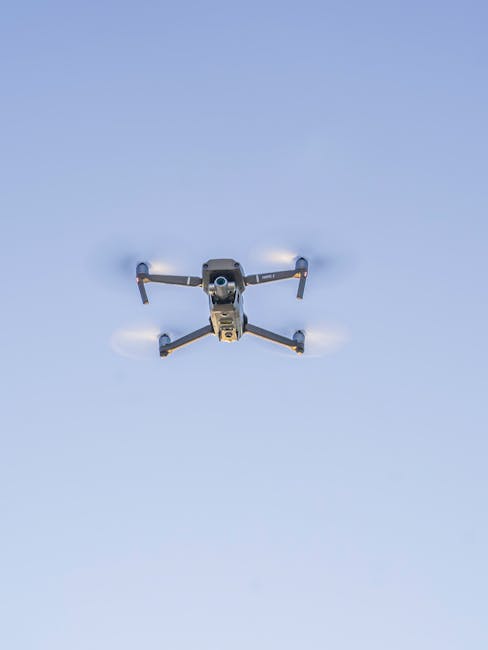Unlock encrypted content
Please enter your SSCE key to initiate on-the-fly decryption.
Decryption key: (Click cancel if you don't have the key)
Copied link to clipboard.
This feature is unavailable for free accounts. Upgrade now and enjoy all Premium benefits.
Go Premium!
This feature is unavailable for free accounts. Upgrade now and enjoy all Premium benefits.
Go Premium!
Please open this page in browser ( Google Chrome or Safari ) to use this feature.
Open In Browser
Emerging Technologies Shaping the Future: Tesla Autopilot, Brain-Machine Interfaces, and More
Random related video for this blog.
Copied share link to clipboard.
From self-driving cars to wearable technology, these innovations hold immense potential to revolutionize various aspects of our lives. In this article, we will explore some of the most exciting emerging technologies, including Tesla Autopilot, Brain-Machine Interfaces, wearable technology, smart cities, and more.
Tesla Autopilot: Paving the Way for Autonomous Driving
Tesla Autopilot is at the forefront of the autonomous driving revolution. This groundbreaking technology enables Tesla vehicles to navigate and operate on their own, with minimal input from the driver. By combining advanced sensors, cameras, and artificial intelligence, Tesla Autopilot enhances road safety, reduces traffic congestion, and offers a glimpse into the future of transportation. With Autopilot engaged, Tesla vehicles can automatically steer, accelerate, and brake, making highway driving more efficient and stress-free. The system utilizes a combination of cameras, radar, and ultrasonic sensors to detect and respond to the surrounding environment. This allows the vehicle to maintain its lane, change lanes, and even park itself with remarkable precision. While Tesla Autopilot is undeniably impressive, it is important to note that it is not fully autonomous. The technology requires the driver to remain alert and ready to take control of the vehicle at any time. However, Tesla continues to push the boundaries of autonomous driving, with frequent software updates that introduce new features and improve the overall capabilities of Autopilot.Brain-Machine Interfaces: Expanding the Boundaries of Human Potential
Imagine controlling a computer or a robotic arm with just your thoughts. Brain-Machine Interfaces (BMIs) are making this a reality. BMIs bridge the gap between the human brain and external devices, allowing for direct communication and control. This technology has the potential to revolutionize healthcare, assist individuals with disabilities, and unlock a new era of human-machine interaction. By implanting electrodes directly into the brain or using non-invasive techniques such as electroencephalography (EEG),BMIs enable individuals to control devices or interact with virtual environments using their thoughts. This has incredible implications for people with paralysis or limb loss, as it can restore mobility and independence. One remarkable example of BMI technology is the development of robotic exoskeletons that can be controlled by the user's brain signals. These exoskeletons allow individuals with spinal cord injuries to walk again, providing them with newfound freedom and mobility. Additionally, BMIs have shown promise in the field of neurorehabilitation, where they can aid in the recovery of motor function after strokes or other neurological disorders.
Wearable Technology: Integrating Innovation into Daily Life
Wearable technology has become increasingly prevalent in recent years, seamlessly integrating innovation into our daily lives. From smartwatches to fitness trackers and augmented reality glasses, these devices offer a range of functionalities that enhance convenience, productivity, and overall well-being. Smartwatches, such as the Apple Watch or Fitbit, have become more than just timekeeping devices. They can track our physical activity, monitor our heart rate, and even provide personalized fitness recommendations. These wearables have revolutionized the way we approach health and wellness, empowering individuals to take control of their own fitness journeys. Augmented reality (AR) glasses, like the Microsoft HoloLens, have the potential to transform various industries, from healthcare and education to manufacturing and design. By overlaying digital information onto the real world, AR glasses can enhance productivity, improve training programs, and enable immersive experiences. Imagine a surgeon having access to real-time patient data during a complex procedure or an architect visualizing a new building design in 3D space – the possibilities are endless.Creating Smart Cities: Harnessing Technology for Sustainable Urban Development
Smart cities are emerging as a solution to the challenges posed by rapid urbanization. By leveraging emerging technologies, these cities aim to enhance the quality of life for their residents, promote sustainability, and improve overall efficiency. From energy management and transportation systems to waste management and citizen engagement, smart cities are revolutionizing urban living. One key aspect of smart cities is the integration of Internet of Things (IoT) devices and sensors. These devices collect data from various sources, enabling city administrators to make informed decisions and optimize resource allocation. For example, smart energy grids can monitor electricity usage in real-time, adjusting supply and demand to reduce waste and lower costs. Another crucial component of smart cities is multi-factor authentication (MFA) systems. With the increasing digitization of services, ensuring secure access to information and resources is paramount. MFA adds an extra layer of security by requiring users to verify their identity through multiple means, such as passwords, biometrics, or physical tokens. This prevents unauthorized access and protects sensitive data.Cybernetics: Blurring the Line Between Humans and Machines
Cybernetics, the study of the interaction between humans and machines, is a field that holds immense potential for the future. By merging biology with technology, cybernetics aims to enhance human capabilities, improve medical treatments, and create new possibilities for human-machine integration. One area where cybernetics has made significant advancements is in the development of prosthetic limbs. By combining advanced sensors, actuators, and neural interfaces, prosthetics can now provide users with a sense of touch and natural movement. This allows individuals with limb loss to regain dexterity and perform complex tasks with ease. Furthermore, cybernetics has the potential to revolutionize the field of medicine. Brain-computer interfaces (BCIs) can enable direct communication between the brain and external devices, allowing for precise control and monitoring of medical implants. This technology has the potential to improve the treatment of neurological disorders, such as Parkinson's disease or epilepsy, by providing targeted stimulation or medication delivery. In conclusion, emerging technologies such as Tesla Autopilot, Brain-Machine Interfaces, wearable technology, smart cities, multi-factor authentication, file search, and cybernetics are shaping the future in profound ways. These innovations hold immense potential to enhance our lives, improve efficiency, and push the boundaries of what is possible. As we continue to embrace these technologies, it is crucial to prioritize ethical considerations, privacy protection, and responsible implementation. The future is bright, and with careful integration and advancement, we can create a world that is safer, more accessible, and technologically empowered.By Amelia Isabella
Email: [email protected]
Related
Real-time System Monitoring: Emerging Technologies for Hybrid Cloud Storage, Data...
July 12, 2023
Read More
Brain-Computer Interface and FileLu.com: Revolutionizing Storage Capacity and Integration
July 12, 2023
Read More
Cryonics Compliance-Ready Storage Solutions: Safeguarding the Future of Data
July 12, 2023
Read More
Introducing FileLu.com: Reliable Data Storage and File Management for the...
July 13, 2023
Read More
Digital Transformation: Empowering the Future of File Accessibility and Storage
July 13, 2023
Read More
Blockchain Data Storage: Revolutionizing Multi-Device Access and Secure File Sharing
July 13, 2023
Read More
Genetic Modification and Lidar Technology: Advancements in File Management and...
July 13, 2023
Read More
Cutting-edge Innovations in Autonomous Driving and Scalable Cloud Storage Architecture
July 13, 2023
Read More
<h1>Unlocking the Future: The Power of Quantum Computing, Autonomous Vehicles,...
July 13, 2023
Read More
Streamlined File Sharing Workflows and Cloud Computing Services: Enhancing Efficiency...
July 13, 2023
Read More
Cloud Infrastructure: Enhancing File Management, Internet Security, and Data Storage
July 13, 2023
Read More
Popular
Latest
The Future of Digital Transformation: Exploring Smart Homes, Efficient File...
November 30, 2025
Read More
Exploring the Benefits of Cloud Storage and Innovative Technologies in...
November 26, 2025
Read More
The Future of Technology: Exploring Biohacking, Space Tourism, and Digital...
November 23, 2025
Read More
The Future of File Sharing: Streamlined Workflows for Photographers and...
November 19, 2025
Read More
Exploring the Intersection of Technology: From Cybersecurity to Augmented Reality...
November 16, 2025
Read More
The Future of File Management: Embracing Edge Computing and Efficient...
November 12, 2025
Read More
The Future of File Sharing: Exploring User-Friendly Solutions and Data...
November 5, 2025
Read More
The Future of Cloud Storage: How FileLu Empowers Creative Professionals...
November 2, 2025
Read More
The Future of Autonomous Technologies: Innovations in Robotics, File Sharing,...
October 29, 2025
Read More
Emerging Technologies Revolutionizing File Management: From Li-Fi to Robust Collaboration...
October 26, 2025
Read More
Emerging Technologies: Exploring the Impact of File Access Auditing, Genetic...
October 19, 2025
Read More
The Future of Data Storage: Exploring Advanced Encryption, Mobile Integration,...
October 5, 2025
Read More
Exploring the Future of Data Management: Security, Efficiency, and Cognitive...
September 28, 2025
Read More
Revolutionizing Data Management: Innovations in Storage, Security, and Sustainable Technology.
September 24, 2025
Read More












